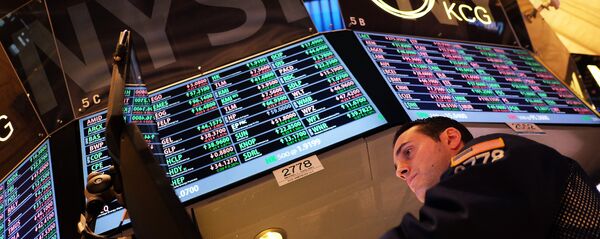The S&P-listed US companies have started the current earnings season with rather disappointing profits figures, meaning the corporate data will be closely watched by market participants in the short-term. The overall situation in US stocks is volatile, though there is hardly a full-blown bubble yet. According to Thomson Reuters estimates, the S&P 500 Index is now worth 16.5 times the expected corporate earnings, only 10% above the all-time average of 15. Now, just before the dotcom bubble burst back in 1999, the figure was 24.5. However, it does not mean the US shares are not overbought — the fact of the matter is, they are at their most expensive since 2004.
Given the recent collapse in mainland China's stocks market, where the bubble popped on June 12, and the markets lost 35% of their valuation, or $3.9 trln (which is 39% mainland's GDP), in a matter of a month, stock bubbles are certainly one of the major challenges to global financial stability. Many nations have enacted monetary stimuli, printing excessive monetary liquidity, most of which ends up in the most developed stock markets. Wall Street is, therefore, at risk, and if earnings data disappoints, the value-to-profits ratio in major indices will make a marked move towards more dangerous levels.
Meanwhile, on Friday US shares climbed amidst the limited global relief as the Chinese and Greek risks have seemingly faded for the time being. The S&P 500 rose 1.2%, and is now at 2,076.62, just 2% higher year-to-date. The Dow climbed 1.2% as well, to 17,760.41, while the tech-driven Nasdaq Index added 1.5%.
However, corporate sentiment is murky. Q2 earnings are expected to slide 3% on average due to the dollar's strength and the costly rearrangement of American industries towards the domestic consumer market. Some fund managers have already opted to buy into the European or Asian assets even though the Greek and mainland China's risks are still unresolved. The reason is that European and Asian stocks are now cheaper than American ones, thus promising greater financial gains.
Over the past 12 months, on average funds dropped their investment in the US by 2%, instead buying Asian or European stock. This strategy has proven successful so far, as the stimulus-driven European Stoxx 600 Index rose 11.2% year-on-year, while the Japanese Nikkei 225 Index added 13.3% — far above the very moderate yearly gains of just below 2% for the S&P.
As the US Fed is promising to hike the base interest rate this year, the US Treasuries and the greenback are both on the rise, inevitably slashing off a larger portion of the US overseas corporate profits. The downward pressure on Wall Street is bound to exacerbate, but whether it should result in a healthy adjustment, or a prominent slump in stocks, is yet unclear.





